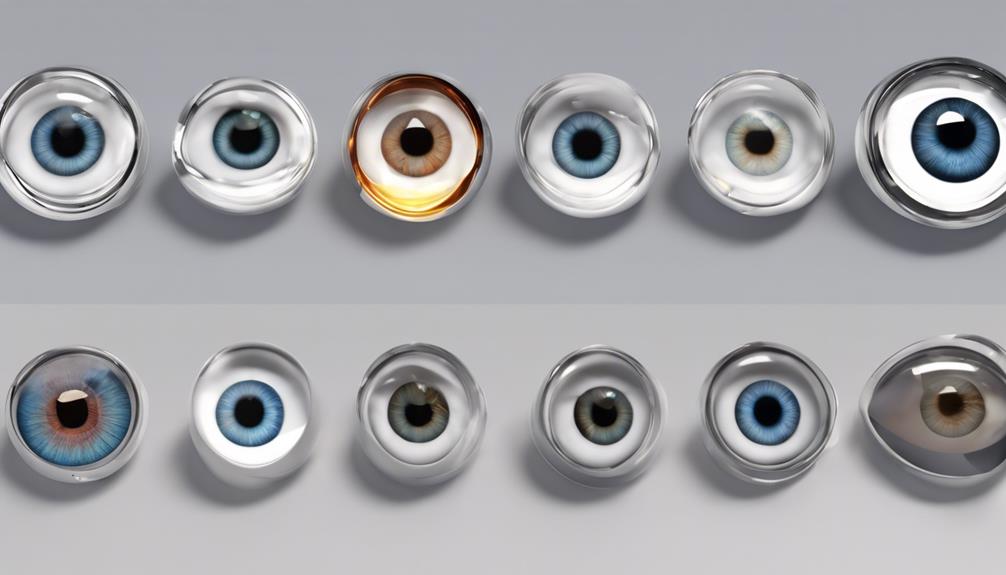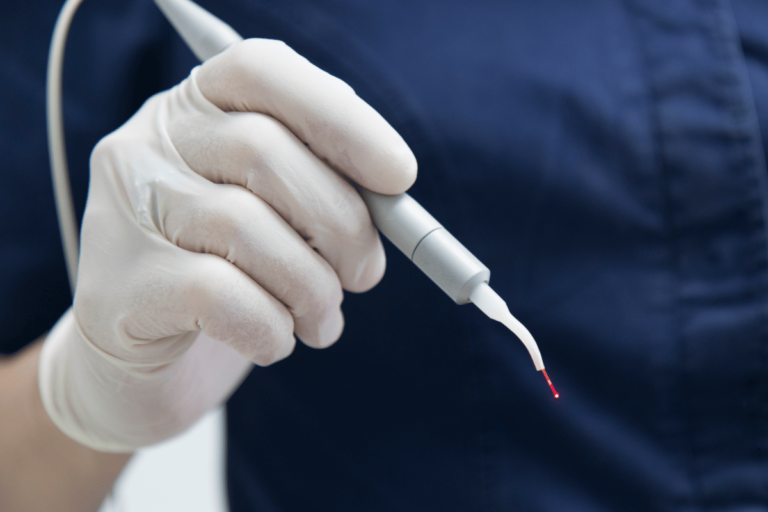Intraocular Lenses Review: Clear Vision for Cataract Patients
Consider intraocular lenses for cataract patients for clear vision. Different materials like silicone or acrylic impact results. Customized options, toric lenses for astigmatism, and multifocal lenses for near and distance are available. Enhanced clarity, color perception, and less dependence on eyewear are benefits. Implantation involves incision, lens removal, and replacement. Post-op care, strict instructions, eye drops, follow-ups, and lifestyle adjustments are crucial. Risks like infection, glare, and retinal detachment are known. Consulting an ophthalmologist tailors care for better outcomes. Prioritize eye health for ideal results and improved quality of life.
Key Takeaways
- Various IOL options improve vision clarity and color perception.
- Reduced need for corrective eyewear after cataract surgery.
- Customized lenses for astigmatism and multifocal needs.
- Post-op care crucial for optimal recovery and outcomes.
- Consult ophthalmologist for personalized care and long-term eye health.
Types of Intraocular Lenses
When contemplating types of intraocular lenses for cataract surgery, it's important to grasp the various options available to determine the best fit for your individual needs. A critical aspect to ponder is the lens materials comparison, which can greatly impact visual outcomes post-surgery. There are different types of materials used in intraocular lenses, such as silicone and acrylic, each with its unique characteristics affecting how light passes through the lens and how well you see.
Moreover, customized options play an essential role in enhancing patient satisfaction. Some lenses offer advanced features like toric lenses to correct astigmatism or multifocal lenses to improve near and distance vision. These personalized choices can cater to your specific vision requirements and lifestyle preferences, leading to improved outcomes and overall contentment with the results of your cataract surgery.
Benefits of IOLs for Cataract Patients
Intraocular lenses (IOLs) provide cataract patients with significant visual benefits post-surgery, enhancing overall vision quality and reducing reliance on corrective eyewear. These benefits make IOLs a popular choice among individuals seeking improved vision after cataract removal.
- Enhanced Vision: IOLs are designed to improve vision clarity, color perception, and contrast sensitivity, allowing individuals to enjoy clear vision for various activities.
- Reduced Dependence on Corrective Eyewear: With the right IOL choice, many patients experience reduced dependence on glasses or contact lenses for daily tasks.
- Diverse Treatment Options: Cataract patients have access to a wide range of IOL types, including monofocal, multifocal, and toric lenses, allowing for personalized treatment based on individual needs and lifestyle preferences.
Implantation Process Overview
When considering the implantation process of intraocular lenses (IOLs), it's important to understand the steps involved, the intricacies of the surgical procedure, and what to expect during the recovery phase.
Each step in the implantation process plays a vital role in ensuring the success of the surgery and the best outcome for your vision. By familiarizing yourself with the details of the procedure and postoperative care, you can approach your cataract surgery with confidence and a clearer understanding of what lies ahead.
Implantation Steps Explained
During the implantation process of intraocular lenses for cataract patients, the surgeon carefully positions the artificial lens inside the eye to restore clear vision.
- Incision Creation: The surgeon makes a small incision in the eye to access the cataract-afflicted lens.
- Lens Removal: The clouded natural lens is broken up using ultrasound and removed gently from the eye.
- Lens Implantation: A new, clear intraocular lens is then inserted into the same position where the natural lens was located.
Surgical Procedure Details
To understand the implantation process of intraocular lenses for cataract patients, envision a meticulous surgical procedure that involves creating a small incision to access the affected lens, gently removing the clouded natural lens, and precisely inserting a new, clear intraocular lens in its place. Before the surgery, preoperative preparations are essential, including discussions about anesthesia options. During the procedure, various surgical techniques are employed, with different incision types used depending on the specific case and the type of intraocular lens being implanted.
| Preoperative Preparations | Anesthesia Options |
|---|---|
| Blood Tests | General Anesthesia |
| Medication Adjustments | Local Anesthesia |
| Eye Measurements | Sedation |
| Instructions for Surgery | Combination Anesthesia |
| Consent Forms | Anesthesia Risks Discussed |
These steps lead to a successful implantation process, restoring clear vision and improving the quality of life for cataract patients.
Recovery After Implantation
After the meticulous implantation process of intraocular lenses for cataract patients, the focus shifts to the essential phase of recovery, where postoperative care plays a pivotal role in the patient's healing journey.
As you begin your recovery journey, here are some key aspects to keep in mind:
- Follow-Up Appointments: Attending all scheduled follow-up appointments is vital to monitor your healing process, guarantee proper healing, and address any concerns promptly.
- Medication Adherence: Strictly follow the prescribed medication regimen to prevent infection, reduce inflammation, and aid in the healing process.
- Rest and Relaxation: Giving your eyes adequate rest and avoiding strenuous activities can promote a smoother recovery process and contribute to better vision improvement.
During this period, it's essential to prioritize your eye health by following these recommendations diligently. Remember, your commitment to postoperative care plays a significant role in the success of your vision improvement and overall healing process.
Post-Op Recovery and Care
After your cataract surgery, it's vital to adhere strictly to the post-operative recovery and care instructions provided by your ophthalmologist. Following the eye drops protocol is essential to prevent infection and promote healing. Attend all scheduled follow-up appointments to monitor your progress and address any concerns promptly. Your ophthalmologist will assess your healing and make sure that your vision is improving as expected.
During the recovery period, it's important to adhere to physical activity restrictions to prevent any strain on your eyes. Avoid strenuous activities like heavy lifting and bending over. Your ophthalmologist may also advise you on driving limitations during the initial recovery phase. It's critical to follow these guidelines to prevent any complications and ensure a smooth recovery process.
Risks and Complications to Consider
Consider the potential risks and complications associated with intraocular lenses following cataract surgery to make informed decisions about your eye health. While intraocular lenses are generally safe and effective, it's essential to be aware of the potential complications and long-term effects that may arise post-surgery.
- Risk of infection: Although rare, there's a small risk of developing an infection after intraocular lens implantation. Infections can cause redness, pain, and even vision loss if not promptly treated.
- Visual disturbances: Some patients may experience issues such as glare, halos, or blurred vision following the placement of an intraocular lens. These disturbances can affect your quality of vision and may require further interventions.
- Retinal detachment: In rare cases, the implantation of an intraocular lens can lead to retinal detachment. This serious complication requires immediate medical attention to prevent permanent vision loss.
Being informed about these potential complications and understanding the long-term effects of intraocular lenses can help you navigate your post-cataract surgery journey with confidence.
Lifestyle Changes With IOLS
Lifestyle changes with intraocular lenses (IOLs) can greatly impact your daily routines and visual experiences post-cataract surgery. Following cataract surgery and IOL implantation, certain lifestyle adjustments can enhance your vision improvement and overall quality of life.
Incorporating diet modifications rich in antioxidants, omega-3 fatty acids, and vitamins C and E can promote ocular health and potentially aid in maintaining clear vision. Additionally, engaging in suitable exercise routines, as recommended by your healthcare provider, can support eye health and general well-being. Regular physical activity may also contribute to better circulation, which is beneficial for ocular tissues.
It is essential to consult with your ophthalmologist regarding specific dietary needs and exercise regimens tailored to your individual condition. By embracing these lifestyle changes, you can optimize the benefits of your IOLs, potentially reducing the risk of future vision complications.
Conclusion
To sum up, intraocular lenses (IOLs) offer cataract patients a clear vision solution with minimal downtime.
Did you know that over 98% of patients who undergo cataract surgery with IOL implantation report improved vision and overall satisfaction with the procedure?
With the benefits outweighing the risks, IOLs provide a valuable option for those looking to restore their vision and enhance their quality of life.
Consider discussing this option with your eye care provider today.







